We love trees. We also love woodies.
For those of you who have been reading this blog for a while, you will know that we promote large volumes of non-compacted, biologically active loam as essential for street tree health and longevity. There are other plants which require soil volume and need attention as well. Vines, hedges, and palms all require high quality soil in appropriate volumes too, but there is a paucity of research to guide designers on how much soil to provide. If no one has any data, how can you determine what the proper sizing of woodies and large monocots? Are there any empirical calculations we can make?
Vines
Many companies in the trellis industry quote our favorite research about soils volumes in their own literature. For example, Greenscreen has a document called Advanced Green Façade Design where on page nine they quote James Urban’s tree planting and design bible, Up by Roots, on recommended soil volume. The practical experience of the people at Greenscreen indicates that sizing soil volumes with vines is all about crown projection and soil volume, just as it would be with trees! They recommend about one cubic foot of soil for every square foot of wall coverage.
Jim’s own work substantiates this practice. These vines – Boston ivy and Wisteria – are growing in known soil volumes of 38 cubic feet each. This project, which is located in Washington DC, is about 15 years old and the vines are the original plants. These planters are highly maintained, including pruning, irrigation, and fertilizer and are in a well-protected plaza with a favorable micro climate for optimum growth, but are stressed and exhibiting traits that suggest they may be at the limits of the soil volume.
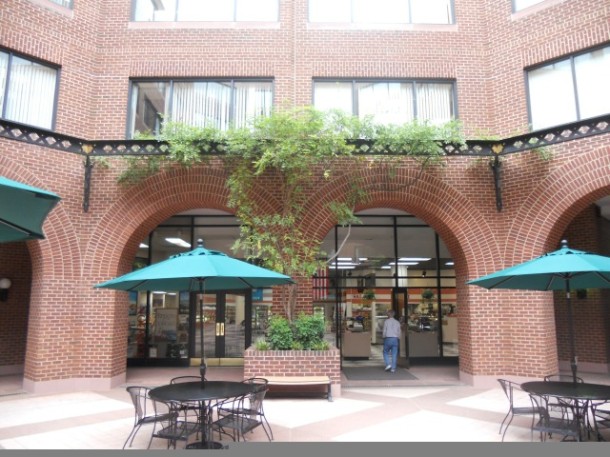
Image credit: James Urban
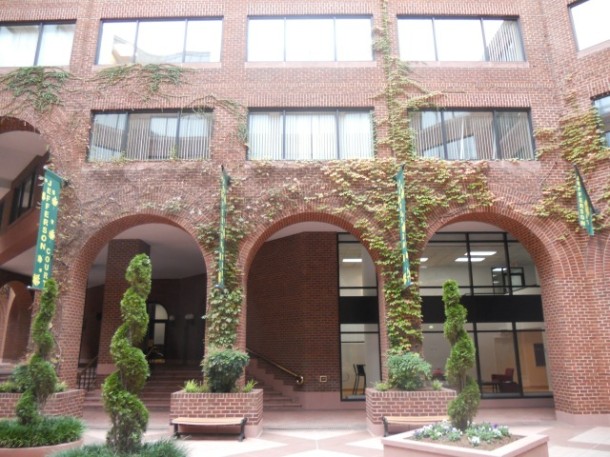
Image credit: James Urban
The approximate coverage by visual estimate is about 2-3 square foot of vine coverage for each cubic feet of soil. But these vines are well past optimum density, and denser coverage is desirable. That would suggest that one square foot of wall coverage for each cubic foot of soil, as recommended by Greenscreen, is probably a safer number to use when creating designs and drawings.
Hedges
Tall, vertical, and clipped hedge plantings also fall outside of the research on soil volumes, but we can still make some educated projections. Often hedges are constructed of plant types that can get much larger than the desired size, and are clipped to the design intent.
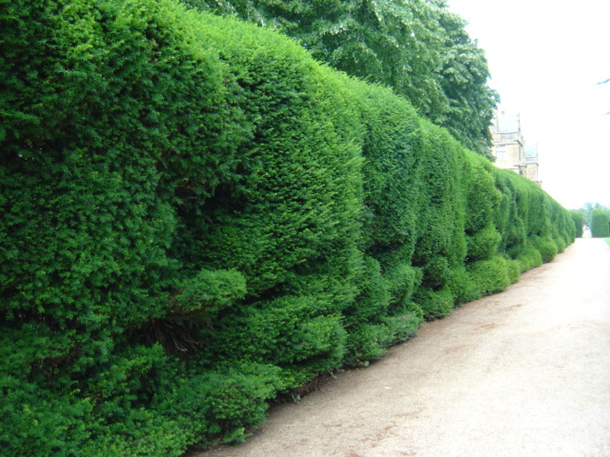
Hedge at Montacute House, Sommerset. Flickr credit: Moochy
Jim Urban’s rule of thumb for hedges is to double the vine one-to-one soil-volume-to-wall-coverage ratio, since the crown area has two sides. To calculate this soil volume, first determine the maximum desired size of the hedge. Like trees, we recommend find that you need about two cubic feet of soil for every square foot of hedge.
Palms
To make a soil volume recommendation for palms, I checked Ed Gilman’s University of Florida Website, which is a robust resource for all things tree related. Unfortunately, while there is plenty of great information regarding the selection, care and maintenance of palms, there is no mention of soil volume. The University of California has some great research as well, but again, nothing on soil volume for palms.

Urban palm trees in Phoenix, AZ. Flickr credit: sea turtle
This is what I would recommend based on my own experience:
For a long time, I have recommended that palms should get around 250 cubic feet of soil per plant, as recommended by the noted British arborist, biologist, and surveyor Jeremy Barrel. However, there are many examples in the field where palms are healthy with less than that. 250 cubic feet is the equivalent of 10’ x 5’ planter with 5 foot soil depth, and that is more than enough in my experience. I have seen happy healthy coconuts thrive in 2’ x 20’ x 5’ planters, for example. I’ve seen Christmas Palms do perfectly well in 4’ x 4’ x 4’, which is only 64 cubic feet. I think this is because only a small portion of the plant is actually alive, so small soil volumes are successful. Many palms can survive sub optimal soil as well, thriving in sand on top of sandstone in Florida, for example. When I asked James Urban, FASLA, about this, he too could not point to any clear research on the topic but suggested that an educated guess would be to approximate the crown diameter for a healthy palm, convert that area into square feet and then multiply by 2.5 (the assumed planting depth) to get to a defensible number.
The designs I’ve discussed here are simply recommendation based on published articles, research, and personal experience. Whenever you are designing for vines, hedges, or palms (or trees, of course!), we always recommend that you consult an experienced local arborist.
Al Key is account manager for the Northeast and Midwest for DeepRoot Green Infrastructure.

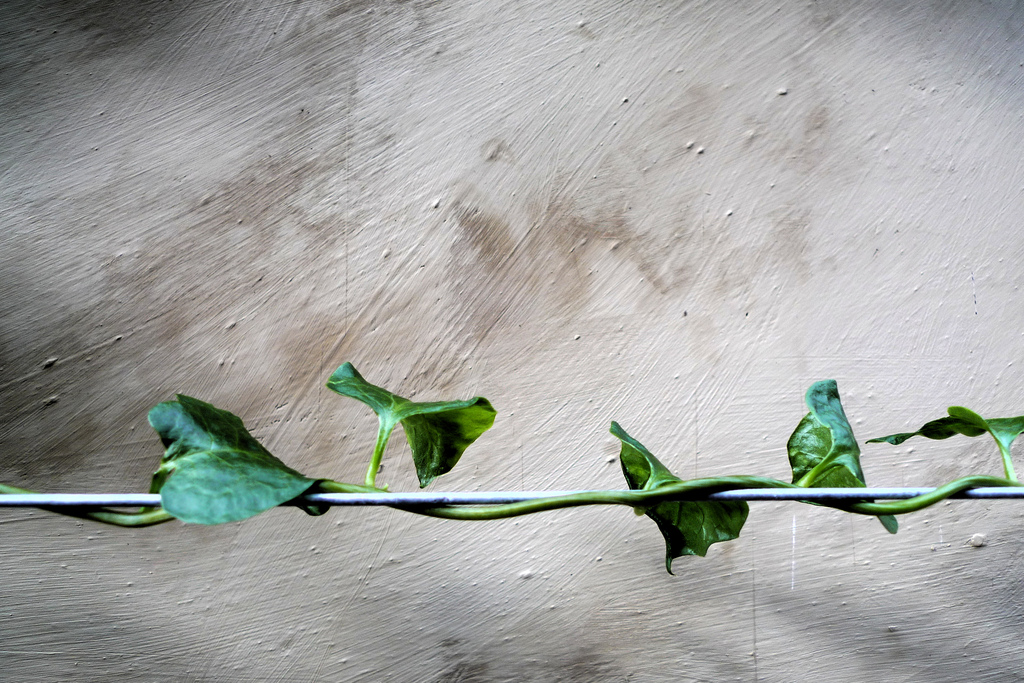

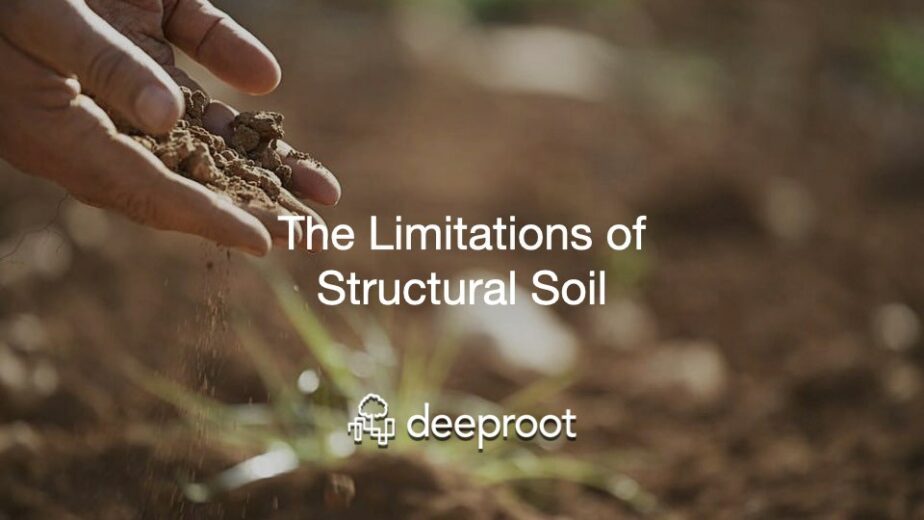
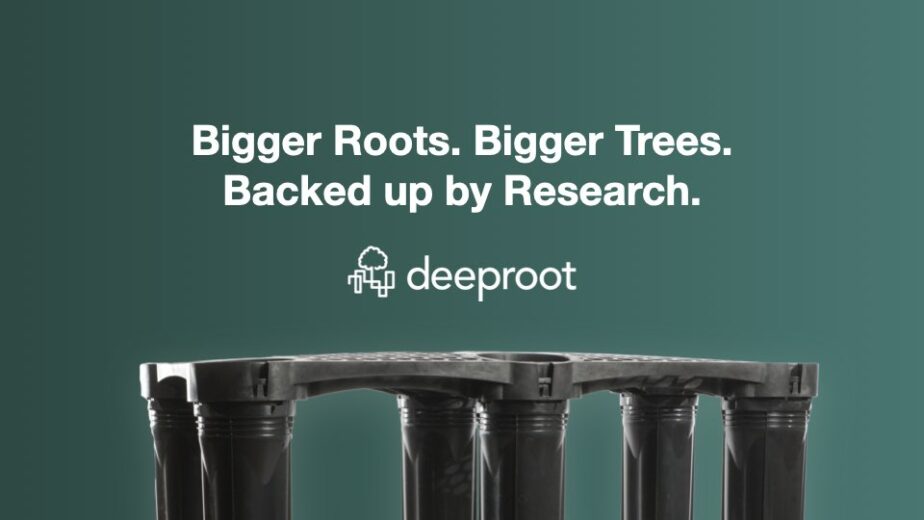

Soil volume research is water requirement. If irrigation is provided the volume required is less. In other words soil volume requirements are confounded by irrigation requirements
Thanks for your comment John! Certainly a very interesting topic. If you could point me to some relevant articles which discuss the issue, I would be most appreciative. As you probably know we have many articles about the relationship between water and trees on this blog. thanks again,
Palms are tricky! They are unlike any other trees. Light and well drained soils such as sand soils are great for palms! Compacted soils on the other hand are a no-go for palm trees